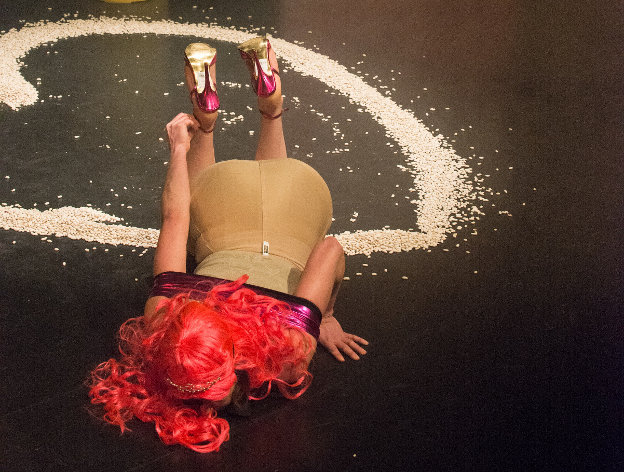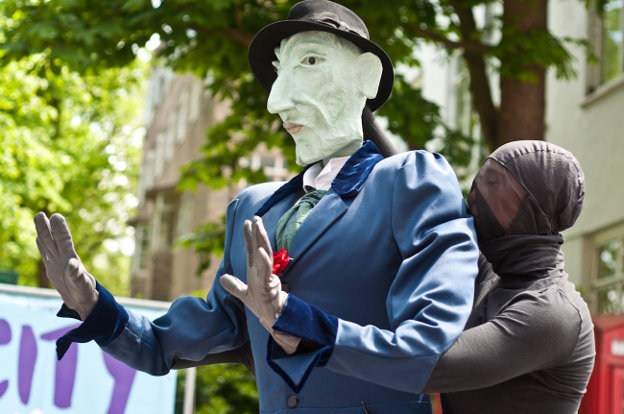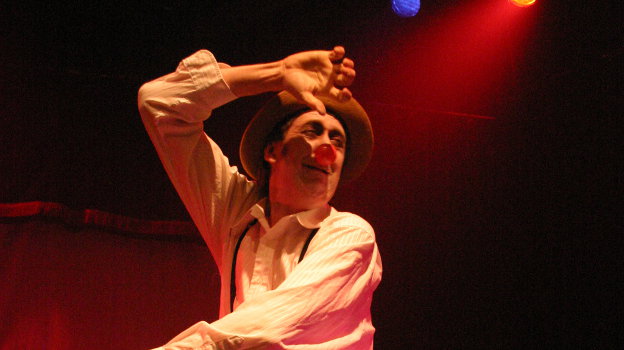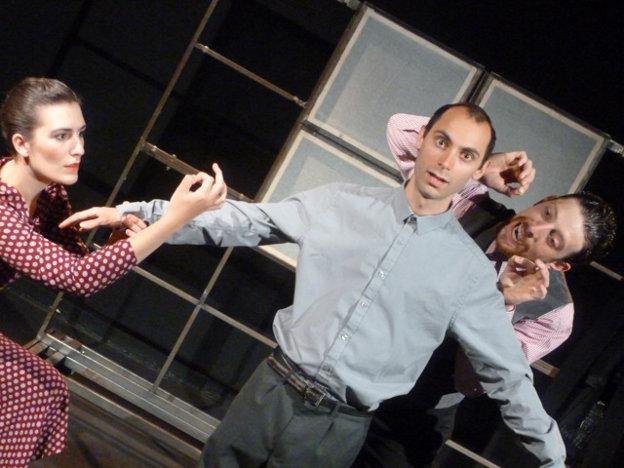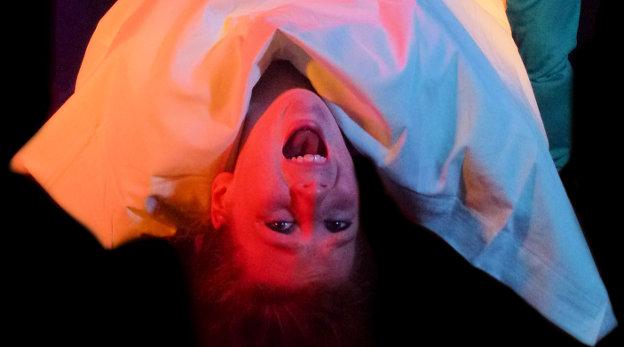Mary Pearson greets us in her dressing gown at the entrance to the Nightingale Theatre, as if she were just out on her front doorstep one morning and had found a bunch of neighbours milling around. The questions are innocuous at first, then a little more searching (going from ‘How are you?’ to ‘How is your Five Year Plan going?’). It’s a nice introduction, where Pearson charms from the start – being careful to do so on the basis, perhaps, that if you are a failure you do need to be nice to people.
She effortlessly steps up a gear with an introductory dance piece centred around a pile of white beans, about eighteen inches in diameter. Oh, I forgot: as we came in each of us were asked to take as many beans in from a proffered bowl as we had unrealised desires, so the beans were already charged with a certain significance. The dance is strong and precise, and at various times she redistributes the beans in different shapes around her with sweeping controlled movements – a big swirling, spiral nebular. Other shapes emerge – a flower, a heart – creating compelling and mutable images that complement her dance.
The staging is minimalist – a plinth here, a screen to one side to change behind – but is sensitively lit for the different phases of the show. Pearson plays herself mainly, but there are some other characters that she morphs into, through subtle changes of face and voice – one a rather dry American academic reminding her of her failures from an intellectual standpoint.
Pearson is a veritable multimedia show in herself, singing then multi-tracking her voice for one piece which started out slow but built up to a more intense collage of sound and commentary. But what was most impressive was her ability to move from close-up, personal, intimate conversation with the audience, to a commanding physicality that filled the space. At one point she scatters the white beans across the entire stage – a very satisfying gesture that transformed the black box arena she was in.
Her set pieces worked well, even when, as befits the title of the show, she undercuts her portrayals with a dry comedy. One particular dress-up part has her donning ribbons, high heeled shoes, a wig, and instead of the sunglasses that would have conventionally filled out this image, a large black eye patch. It changes a hackneyed image into a deeper and more sinister one, and there are other good physical and visual jokes. Pearson works with the personal (which lends the show an edgy authenticity) but within a wider canvas so that there is no sense of indulgence – this is about everybody’s experience of success versus failure, about the way the goalposts have moved (or have they?). There is a lovely sequence where she is putting on a dress behind the screen, in silhouette, and she is struggling vainly to reach and do up the back zip – it’s a poignant and practical image of the failure of being on your own! At the other end of the scale she has episodes of more expansive dance and movement that fit the drama of the narrative and are aesthetically pleasing.
It’s an engaging show, well produced and rehearsed, Pearson making even the flicking of stray beans from under her feet a studied gesture that gives you a sense of the great control she has over her stage presence. There is audience participation as well – invites and rebuffs that fit nicely into the fabric of the performance. Pearson herself is outstanding in her range and concentration, performing with a focus and warmth that draws you in. You end with a lightly conveyed sense of the ways in which success or failure are defined by the myriad expectations that surround us; the skill, or some sort of answer, lies in defining your own boundaries – or creating your own ‘opportunities for non-linear success’. I stayed for another performance in the Nightingale that night and was strangely comforted to see one stray white bean, missed in the extensive clear-up, just poking out from a small gap in the bottom of the stage wall left. To loosely paraphrase some of Pearson’s last words, some things perish, others survive.

